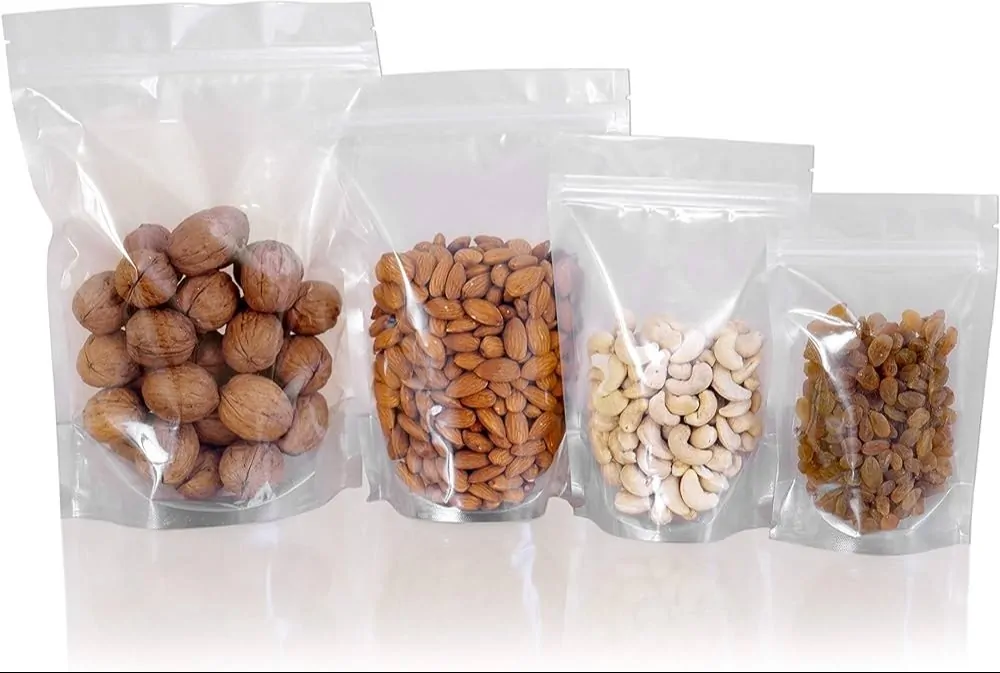The Evolution of Snack Pouches: From Convenience to Sustainability

The world of snack packaging has seen a remarkable transformation over the years, with snack pouches emerging as a leading packaging solution. Initially designed for convenience, snack pouches have evolved into an essential part of modern packaging, incorporating not just practicality but also sustainability. This article explores the evolution of snack pouches, highlighting how they have progressed from simple packaging options to advanced, eco-friendly solutions that meet the needs of both consumers and the environment.
The Early Days of Snack Pouches: Convenience and Functionality
Snack packaging in the early days was predominantly bulky and rigid, with options like cans and jars used to hold everything from chips to nuts. These containers, while effective at protecting the contents, had several downsides: they were heavy, took up too much space, and were not particularly portable. As consumer lifestyles became more fast-paced and on-the-go, the demand for more convenient and lightweight packaging solutions grew.
This is where snack pouches came in. Initially made from lightweight plastic films, these pouches were designed for practicality. Their flexible, resealable nature allowed consumers to easily store snacks, and their compact design made them more portable than traditional rigid containers. Snack pouches quickly gained popularity as the go-to solution for packaging a wide range of snacks, from chips to dried fruits, nuts, and more.
The Rise of Innovation: Enhancing Functionality
As the snack pouch market continued to grow, manufacturers began to focus on enhancing the functionality of snack pouches. The introduction of multi-layer materials and specialized features allowed snack pouches to better preserve product freshness and improve the overall consumer experience.
1. Multi-Layer Materials for Freshness Preservation
One of the significant advancements in snack pouch technology was the use of multi-layer films. These pouches are made with several layers of material that provide superior protection against moisture, air, and light. This multi-layer construction helps extend the shelf life of snacks, preserving their flavor and texture. For example:
- Oxygen Barriers: Oxygen exposure can cause snacks to become stale or spoil. Multi-layered pouches often use materials that act as barriers to oxygen, preventing oxidation and keeping snacks fresh longer.
- Moisture Barriers: Moisture can ruin crispy snacks like chips or crackers. Snack pouches now feature moisture-resistant layers that keep the contents dry and crisp.
- UV Protection: Exposure to light can degrade the flavor and nutrients of certain snacks. Snack pouches often include an additional protective layer to shield the contents from harmful UV rays.
2. Resealable Zippers for Convenience
The addition of resealable zippers or press-to-seal closures was another important innovation. These features allowed consumers to open and close snack pouches easily, ensuring that the snacks remained fresh between uses. This design not only enhanced convenience but also improved product longevity by helping to preserve the freshness of the contents.
The Push Towards Sustainability: Meeting Consumer Demand for Eco-Friendly Packaging
In recent years, sustainability has become a critical concern for both consumers and manufacturers. With growing awareness about environmental issues, consumers have increasingly demanded packaging solutions that are more eco-friendly. Snack pouch manufacturers have responded by developing packaging that not only meets the functional needs of consumers but also addresses environmental concerns.
1. Eco-Friendly Materials
As part of the shift toward sustainability, many snack pouch manufacturers have turned to more eco-friendly materials. These materials are designed to reduce the environmental impact of packaging while still maintaining the durability and functionality required for snack packaging. Some key eco-friendly innovations include:
- Recyclable Materials: Many snack pouches are now made from recyclable materials, allowing consumers to recycle the packaging after use.
- Biodegradable and Compostable Pouches: Some brands have started using biodegradable or compostable materials to create snack pouches that break down naturally in the environment, reducing waste.
- Plant-Based Films: Manufacturers are increasingly using plant-based films made from renewable sources, such as cornstarch or sugarcane, to produce snack pouches. These materials are compostable and provide an environmentally friendly alternative to traditional plastic packaging.
2. Reduction in Packaging Waste
Beyond the materials used, there has also been a push toward reducing the overall packaging waste generated by snack pouches. Manufacturers have worked to optimize pouch designs to use fewer materials while still providing the necessary protection for snacks. Additionally, efforts have been made to reduce the size of pouches, minimizing the space they take up during transportation and reducing the overall carbon footprint associated with packaging production.
3. Sustainability Certifications and Practices
To further enhance the environmental credentials of snack pouches, many manufacturers are obtaining sustainability certifications. These certifications, such as FSC (Forest Stewardship Council) for paper-based materials or the use of recyclable logos, help consumers identify brands that are committed to sustainability. Many brands are also incorporating sustainable practices in their manufacturing processes, reducing energy consumption and minimizing waste during production.
The Future of Snack Pouches: A Continuing Journey Towards Sustainability
As sustainability continues to be a driving force in packaging innovation, the future of snack pouches looks promising. The next generation of snack pouches will likely see even more advanced materials and technologies designed to reduce environmental impact while maintaining product quality and freshness.
Consumers are increasingly seeking out products that align with their values, and snack brands that adopt sustainable packaging solutions will be well-positioned to meet this demand. Additionally, as technology advances, manufacturers will have even more opportunities to create packaging that balances convenience, functionality, and sustainability.
Conclusion
The evolution of snack pouches from simple convenience-based packaging to advanced, sustainable solutions represents a significant shift in the snack packaging industry. What began as a solution for portability and ease of use has grown into a sophisticated, eco-conscious choice that addresses both consumer needs and environmental concerns. As the demand for sustainable packaging continues to rise, snack pouches will remain at the forefront of packaging innovation, offering a combination of convenience, freshness preservation, and sustainability that appeals to today’s environmentally conscious consumers.





